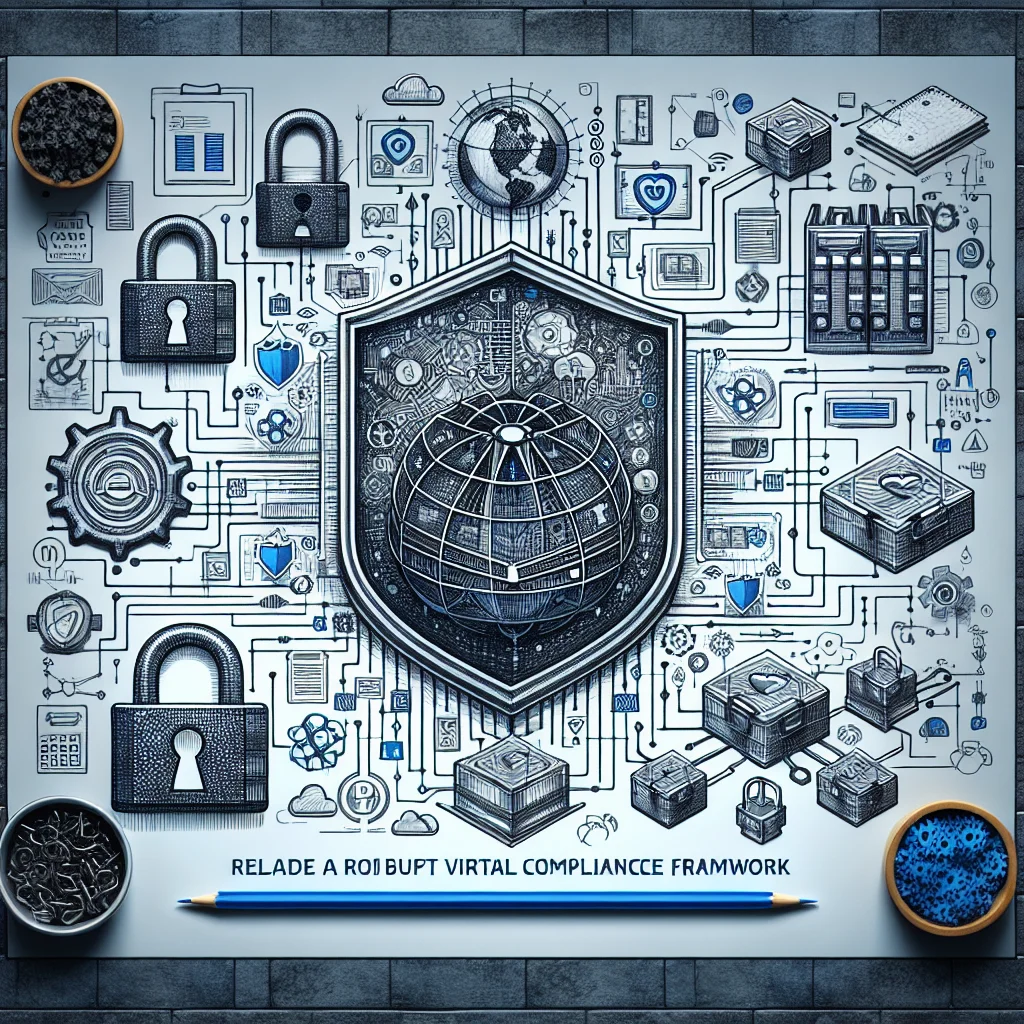The financial sector is rapidly evolving, prompting changes in the standards and regulations that safeguard our transactions. One significant development is Visa’s decision to sunset the Visa PIN Security Program, which highlights a shift towards a multi-layered security approach. This decision reflects a recognition of the changing payment security landscape and the relative risks of PIN compromises compared to other emerging data vulnerability trends in the industry. In this article, we aim to equip Chief Information Security Officers (CISOs) with a thorough understanding of this transition, including FAQs and actionable insights for Fintechs and banks. Additionally, we will explore how ComplyHawk can streamline compliance processes in this new environment.
Understanding the Visa PIN Security Standard
The Visa PIN Security Program sets forth requirements to protect PINs during the entire processing cycle. These include cryptographic key management, secure transmission, and storage of PINs. The objective is to minimize fraud and enhance the trustworthiness of payment systems.
Key Components of the Standard
- PIN Encryption: Ensures the PIN is encrypted at all stages of processing.
- Key Management: Guidelines for the secure generation, distribution, and storage of cryptographic keys.
- Physical Security: Requirements for the secure environment where PINs are processed.
- Logical Security: Protocols for access control, monitoring, and auditing of systems handling PINs.
Why Visa has sunsetted the program?
Visa has announced the sunset of its PIN Security compliance program, effective October 1, 2023.
Why has Visa discontinued its PIN compliance program?
Visa’s choice to end the compliance program signifies a transition to a multi-layered security strategy, acknowledging the changing landscape of payment security and the relative risks associated with PIN compromises compared to other emerging data compromise trends in the industry.
Will acquirers, Third Party Agents, and Processors still need to comply with PCI PIN Security standards?
Absolutely, they must continue to safeguard PIN data according to industry security protocols and Visa’s guidelines at all times. Furthermore, the termination of the compliance program does not eliminate or modify any fees, non-compliance evaluations, or other liabilities linked to a compromise that arises from breaching Visa’s Rules, resulting in the loss of Visa account data with a PIN. It is crucial to note that Visa’s update to its compliance program should not be seen as a diminished focus on the PCI PIN standard. Adherence to industry standards is vital for maintaining a secure payment ecosystem.
Will organizations still have to provide Visa with proof of compliance with PCI PIN Security Requirements?
While Visa does not mandate regular submissions to validate compliance with PCI PIN Security Requirements, acquirers, third-party agents, and processors involved in handling PINs for Visa transactions or providing key management services or supporting PIN entry devices must remain compliant with PCI PIN Security Requirements. This compliance is verified by a Qualified PIN Assessor (QPA) conducting the evaluation.
Can organizations confirm compliance with PCI PIN Security Requirements through self-assessment?
No, the PCI PIN Security Attestation of Compliance necessitates a Qualified PIN Assessor to evaluate and verify the requirements and controls, and this is advised to be done every two years.
Frequently Asked Questions (FAQs)
1. What is the Visa PIN Security Standard?
- The Visa PIN Security Standard is a set of requirements designed to protect the integrity and confidentiality of PINs during card transactions.
2. Why is the Visa PIN Security Standard important?
- It minimizes fraud risk and ensures the trustworthiness of payment systems by safeguarding PINs.
3. Who needs to comply with the Visa PIN Security Standard?
- All entities that process Visa card transactions, including banks, Fintech companies, and payment processors.
4. How often are audits required?
- Audits are typically required annually but may vary based on specific requirements and risk levels.
5. What are the penalties for non-compliance?
- Penalties can range from fines to suspension from processing Visa transactions.
6. How does the Visa PIN Security Standard relate to PCI-DSS?
- Both standards aim to secure payment card data but focus on different aspects. PCI-DSS covers broader data security, while Visa PIN focuses specifically on PIN security.
7. Can one system be compliant with both Visa PIN and PCI-DSS?
- Yes, many controls overlap, and a well-designed system can meet both sets of requirements.
8. What is cryptographic key management?
- It involves the secure creation, distribution, and storage of keys used to encrypt and decrypt PINs.
9. How are PINs encrypted?
- PINs are encrypted using industry-standard algorithms like Triple DES or AES.
10. What are the physical security requirements?
- These include secure facilities, restricted access, and surveillance systems.
11. What are logical security controls?
- These controls include user authentication, access logs, and intrusion detection systems.
12. What documentation is needed for compliance?
- Detailed records of key management, encryption processes, physical and logical security measures.
13. How does one start the compliance process?
- Begin with a gap analysis to identify areas of non-compliance and develop a remediation plan.
14. What are the common challenges in achieving compliance?
- Challenges include legacy systems, lack of expertise, and resource constraints.
15. How can ComplyHawk help?
- ComplyHark offers automated compliance tools that streamline document requests, tests, and monitoring.
16. What are the benefits of using ComplyHawk?
- Increased efficiency, reduced manual effort, and enhanced accuracy in compliance management.
17. How often should systems be reviewed?
- Regular reviews, at least annually, are recommended to ensure ongoing compliance.
18. What are the best practices for maintaining compliance?
- Continuous monitoring, employee training, and regular audits.
19. How does the Visa PIN Security Standard impact Fintechs?
- Fintechs must integrate robust security measures early in their development to comply.
20. What specific controls should Middle Eastern CISOs focus on?
- Controls that address regional regulatory requirements, cultural nuances, and technological infrastructure.
Getting Started with PIN Compliance
For Fintechs
Fintech companies are often agile but may lack the established processes and infrastructure of traditional banks. Here’s a step-by-step guide to getting started with a PIN compliance program
- Conduct a Risk Assessment:
- Identify potential vulnerabilities in your PIN processing systems.
- Develop a Compliance Roadmap:
- Create a detailed plan outlining the steps to achieve compliance.
- Implement Security Controls:
- Deploy encryption, key management, and physical and logical security measures.
- Train Your Staff:
- Ensure that all employees understand the importance of compliance and their roles in maintaining it.
- Engage with a Compliance Partner:
- Utilize tools like ComplyHawk to automate and streamline the compliance process.
For Banks
Banks typically have more established processes but must continually adapt to changing regulations and technologies. Here’s how banks can approach PIN compliance:
- Perform a Gap Analysis:
- Identify gaps between current practices and a PIN Security Standard, like PCI-PIN.
- Upgrade Legacy Systems:
- Replace or upgrade outdated systems that cannot meet compliance requirements.
- Strengthen Key Management:
- Implement robust cryptographic key management practices.
- Regular Audits and Monitoring:
- Conduct regular internal audits and continuous monitoring to ensure ongoing compliance.
- Leverage Technology Solutions:
- Use solutions like ComplyHawk to manage document requests, tests, and compliance workflows.
Implementing a PIN Security Standard (PCI-PIN)
Implementing a PIN Security Standard such as PCI-PIN, requires a comprehensive approach that covers both technical and administrative aspects. Here are the key steps:
- Define Responsibilities:
- Assign specific roles and responsibilities for compliance within your organization.
- Develop Policies and Procedures:
- Create detailed documentation outlining your compliance policies and procedures.
- Deploy Security Technologies:
- Implement encryption, access control, and monitoring technologies.
- Conduct Training and Awareness Programs:
- Educate employees about the PIN Security Standard and their role in maintaining compliance.
- Regular Testing and Audits:
- Perform regular tests of your security measures and conduct audits to ensure compliance.
Common Controls Between Visa PIN Standard, ISO 27001, and PCI-DSS
Many controls required by the Visa PIN Security Standard overlap with those in ISO 27001 and PCI-DSS, along with specific PCI PIN Security requirements. Here are some common controls with specific clauses:
- Access Control (ISO 27001: A9, PCI-DSS: 7, PIN Security: 3.2):
- Restrict access to sensitive data and systems.
- Encryption (ISO 27001: A10, PCI-DSS: 3, PIN Security: 2.3):
- Encrypt sensitive data both in transit and at rest.
- Monitoring and Logging (ISO 27001: A12, PCI-DSS: 10, PIN Security: 3.4):
- Continuously monitor and log access to sensitive data and systems.
- Incident Response (ISO 27001: A16, PCI-DSS: 12.10, PIN Security: 3.5):
- Develop and maintain an incident response plan.
- Regular Audits (ISO 27001: A18, PCI-DSS: 11, PIN Security: 3.6):
- Conduct regular internal and external audits to ensure compliance.
What Does it Mean for CISOs in the Middle East?
For CISOs in the Middle East, achieving compliance with a PIN Security Standard can be particularly challenging due to regional regulatory requirements and technological infrastructure. Here are some considerations:
- Regional Regulations:
- Ensure compliance with local data protection and financial regulations.
- Cultural Nuances:
- Understand and address cultural factors that may impact compliance efforts.
- Technological Infrastructure:
- Adapt compliance strategies to fit the technological landscape of the region.
How ComplyHawk Can Automate Compliance
ComplyHawk offers a comprehensive suite of tools designed to automate various aspects of compliance with the Visa PIN Security Standard. Here’s what ComplyHawk can do:
- Automate Document Requests:
- Automatically generate and manage document requests for compliance audits.
- Streamline Tests:
- Automate the execution and reporting of compliance tests.
- Continuous Monitoring:
- Provide continuous monitoring and alerts for potential compliance issues.
Conclusion
Navigating the Visa PIN Security Standard was a complex and challenging process, vital for securing PIN-based transactions. With the Visa PIN program sunsetted in October 2023, it’s important for CISOs to understand the requirement for PCI PIN security still exists. Therefore, conducting a thorough risk assessments, and utilizing an automated compliance tool like ComplyHawk can manage compliance effectively.
Want to find out more? Book a demo with ComplyHawk to see if aligned.



